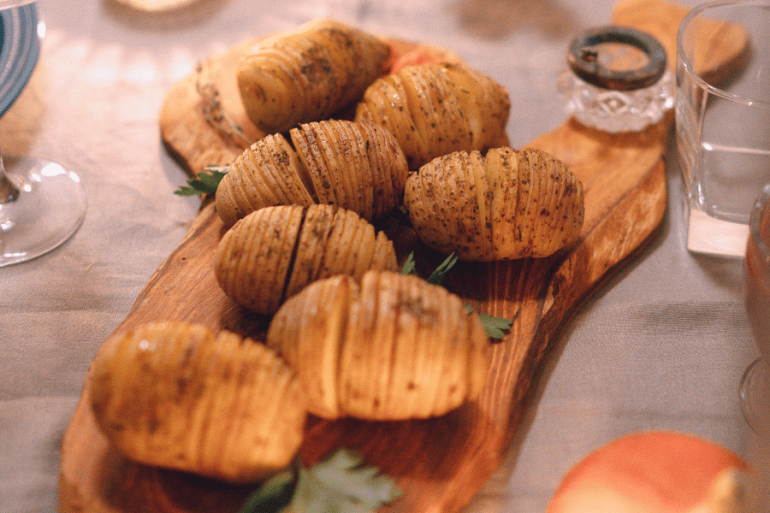It’s hard to find a more versatile vegetable than the potato. It can be fried, scalloped, roasted, mashed, or hashed. Potatoes are gluten-free and pair well with breakfast, lunch, or dinner. Not only is the potato versatile, but they’re also affordable, accessible, and delicious any way you dig ’em.
Potatoes have played an important role in the planet’s food security. Historians have traced the history of the potato back to Ancient Peru. It’s believed the potato was first introduced to Europe by the Spanish explorers of the “New World.” Some credit the potato with ending the famine in Northern Europe. Potatoes were first grown by settlers in New Brunswick as early as the mid-1600s and have been a staple in Canadian homes ever since.

Potatoes are Canadians’ favourite side dish, complementing any main meal. Add roasted potatoes to a chicken dish, french fries to a burger, hash browns to eggs, and have you ever been to a barbeque that didn’t have potato salad?
Potatoes are also good for your health and pack a nutritious punch. Cooked potatoes with the skin are a good source of potassium and vitamin C. Potatoes are mainly comprised of carbs but contain almost no fat, so they can keep us full for longer.

Potato Tips
How To Make The Perfect Potato
1) Choose the Right Spud.
Potatoes come in many forms, but some varieties are better suited for some purposes than others.
Russet potatoes have low water content and are high in starch, making this the preferred potato for baking, frying, mashing, and roasting.
Red potatoes have lower starch and higher water content and are ideal for soups, stews, and salads.
Yellow potatoes are all-purpose potatoes with a buttery taste and a rich, creamy texture.
2) Store Your Potatoes in the Right Location
Sunlight will cause your potatoes to release a chemical called solanine, which can be toxic. A cool, dark location, like a root cellar, is the best place to store potatoes. Avoid placing potatoes in the fridge. Fridge temperatures convert the starch to sugar which can change the taste of the potatoes.
3) Add Potatoes to Cold Water First
To get silky smooth mashed potatoes, start potatoes in cold, salted water, then bring the pot to boil. When they’re nearly ready to be mashed, heat your butter and milk in a small saucepan rather than adding them straight from the cold fridge.
4) Salt the Water, Not the Potatoes
Adding salt to water causes the potatoes’ starch to cook more, giving it a rich, creamy texture, while cooking potatoes in unsalted water results in a bland taste. Similarly, placing potatoes on a baking sheet without salt can cause them to get overcooked. The salt helps ensure the potatoes cook evenly.
One little vegetable with so much potential. Three cheers for the potato!
By Lisa Evans








